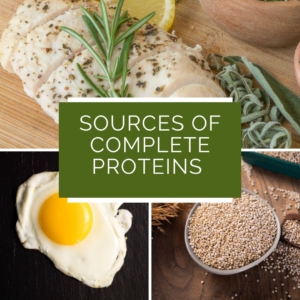What is a Complete Protein?
What is a complete protein?
When you consume a food that contains protein, it is broken down into smaller pieces – amino acids – that are then absorbed by the intestines. These amino acids are then moved around the body to be used as they are needed. While many foods may contain some form of protein, they may not be “complete.”
A food is said to be a complete protein if it contains all nine essential amino acids that humans require from the diet. These amino acids are essential because your body cannot make them on its own. Examples of complete proteins from animal products are eggs, poultry, fish, beef, pork and dairy. There are also some plant sources of complete protein including soy, quinoa and buckwheat.
You might be saying, “But I thought beans and nuts also contain ed protein.” They do! These foods are sources of incomplete proteins. While we recommend getting as many food sources with complete proteins as possible, these are also great to include in the diet. In addition to this, consuming certain incomplete proteins with each other can lead to all nine essential amino acids being present. Some examples of this are:
ed protein.” They do! These foods are sources of incomplete proteins. While we recommend getting as many food sources with complete proteins as possible, these are also great to include in the diet. In addition to this, consuming certain incomplete proteins with each other can lead to all nine essential amino acids being present. Some examples of this are:
- Nuts or seeds AND a whole grain
- Beans AND brown rice
- Hummus AND whole grain pita bread



